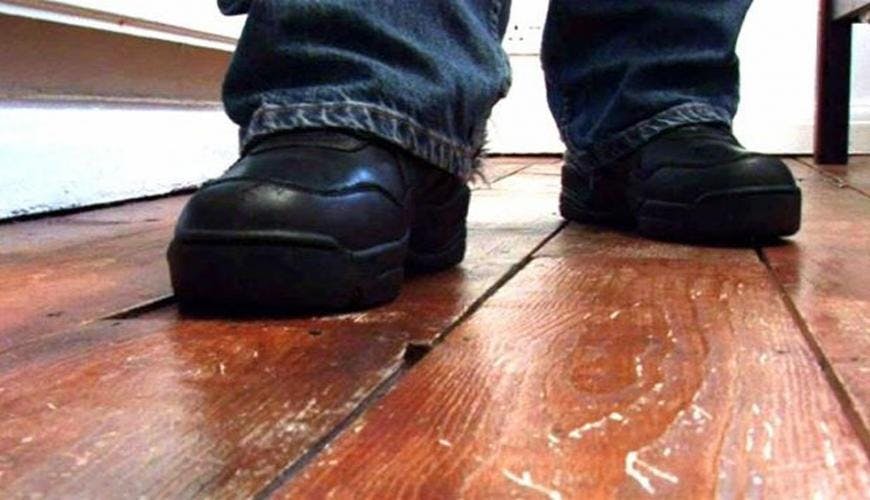
Loose sub flooring can also produced high pitched chirps. As you walk over the floor, the boards rub against each other or slide over nail shafts to make a racket of squeaks and creaks that you’ll swear are mice beneath the floor boards. Typically, a squeaky floor is caused by your flooring wood trying out and shrinking. Folks might try and tell you that it’s your house just “settling” but this is no comfort when you’re woken in the middle of the night and are absolutely certain there’s a monster in the hallway doing a jig on the squeaky step. But in the end, you'll have to decide if you want a tiny, barely visible hole, which you can strategically cover with furniture or a throw rug, or if you prefer to live with a few squeaks.Your squeaky floors might help you catch your kids sneaking out after dark or your partner creeping downstairs for a midnight snack, but otherwise, they’re a bit of a pain. You could try concealing the holes with caulk.

Linoleum and vinyl will expand slightly to partially cover the hole, but they won't hide it completely. But you'll have to fill any holes left behind in hardwood floors using a wood filler. Carpeting will hide the resulting screw hole. The Squeeeeek No More system works on a variety of flooring products, including carpeting, hardwood planks, vinyl sheet and tiles, and linoleum tiles. The threaded portion of the screw remains in place and securely fastens the subfloor to the joist. The shaft of each screw is pre-scored 1 inch from the top, so that when you drive the screw through the tripod tool, the screw snaps off just below the surface of the subfloor. You use the tripod and bit to drive the screw through the floor covering and subfloor and into a joist. The screws are coated with wax to drive through carpet without catching strands and causing a run.
#Floor creaks driver#
The kit includes a tripod tool, driver bit, stud finder, and special counter-snap screws. If the shim is too thick to easily score and snap, trim it with an oscillating multi-tool fitted with a plunge-cutting wood blade.Ī cleverly designed product called Squeeeeek No More offers a simple solution to eliminating squeaks from the topside of the floor. Once the glue has dried completely, trim the shims flush with the joists by first scoring them with a utility knife and then snapping them off. Sometimes the gap is only visible on one side of the joist.


And be sure to check both sides of the joist at each squeaky location. Repeat the above process to insert shims into gaps at other squeaky spots. The purpose of the shim is to just fill the void and prevent the floor from moving up and down, which will oftentimes silence the squeak. (You may have to remove some insulation to get a clear view.) If a gap is visible-no matter how small-spread some carpenter’s glue onto a thin wood shim and push it into the gap.ĭon’t hammer in the shim and be careful not to force it in too far you might accidentally raise the subfloor, creating a hump in the floor above. Once you pinpoint the exact location of the squeak, use a flashlight to see if there’s a gap between the top of the floor joist and the underside of the subfloor. Listen carefully and as soon as you hear a squeak, ask the person to stop and step down on the exact spot again. Go below the room with the squeaky floor and have someone slowly walk back and forth across the floor. Silencing squeaky floors is much easier if you have access to the space beneath the floor via a basement or crawl space.


 0 kommentar(er)
0 kommentar(er)
